MARIANI’SVirtual
Gourmet
January 27,
2013
NEWSLETTER
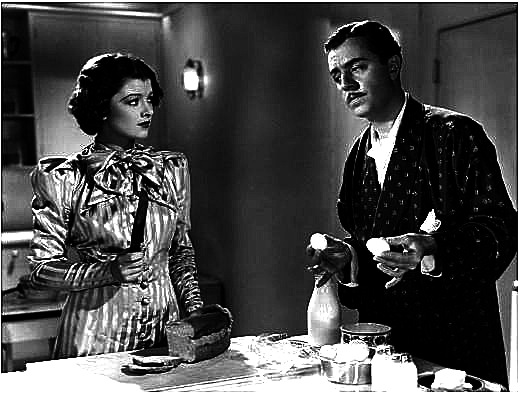
In Old Oaxaca Where the
Mezcals Are Made
by Brian Freedman
NEW YORK CORNER
The Strand
by John Mariani
Notes
from the Wine Cellar
Red
Burgundies Now Ready to Be Enjoyed Sooner Rather
Than Later
❖❖❖
Where the Mezcals Are
Made
by Brian
Freedman

Tequila and mezcal, for all
their rising stock among the legions of newly-minted
mixologists and spirits aficionados across the
country, are still frustratingly misunderstood by far
too many casual drinkers. Mention them to most people,
and chances are you’ll be met with some variation of a
comment having to do with college-party hangovers and
the fact that they still have a hard time drinking the
stuff as a result. This is one of the great shames of
our national drinking life, for tequila and mezcal
are, when crafted with care, among the most complex,
terroir-specific, evocative spirits around.
Serious cocktail bars have done a
great job of incorporating mezcal into their drinks,
both classics--like a mezcal margarita--and original
ones, like the fantastic Esta Tierra Es Tuya (mezcal,
chamomile, and egg whites) at Hop Sing Laundromat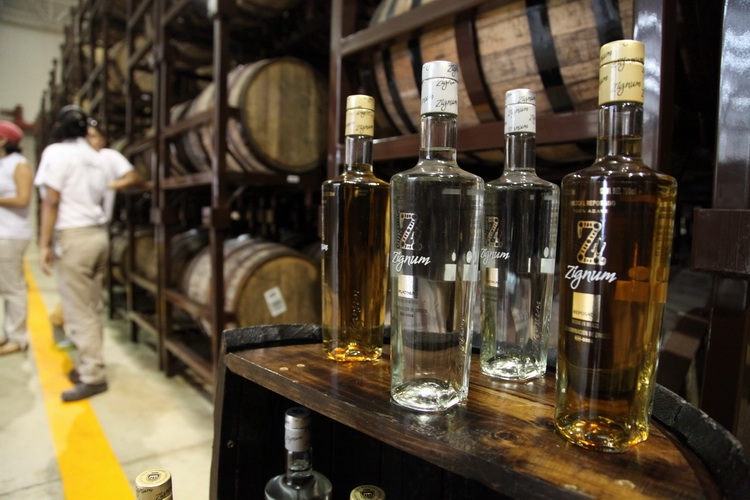 in my native Philadelphia. But on
balance, it tends to take a bit more convincing to get
the uninitiated to tuck into a glass of mezcal than it
does with the other major spirits. Years of
misunderstanding exactly what it is have had their
toll, to be sure.
in my native Philadelphia. But on
balance, it tends to take a bit more convincing to get
the uninitiated to tuck into a glass of mezcal than it
does with the other major spirits. Years of
misunderstanding exactly what it is have had their
toll, to be sure.
So when the opportunity arose to
travel to Oaxaca, mezcal’s most famous home in
southeastern Mexico, I jumped at it. There’s no better
way to understand a wine or spirit than to walk the
land where it’s born and to sip it alongside the local
cuisine with which it ostensibly evolved, and I’d
wanted to deepen my knowledge of this world-class
spirit for a long time.
I was not disappointed. The trip,
sponsored by Zignum, an excellent, justifiably
successful mezcal producer whose take on the
traditional agave spirit is a bit different than
others', was a quick visit, but I was thoroughly
charmed by the region itself and gained a delicious
new appreciation for one of the great spirits on the
market.
First, a word on classification.
All spirits produced from the fermented juice of the
agave plant are technically classified as mezcal.
Tequila is a spirit produced from a specific type of
agave (the Blue Weber) from specific demarcated zones
(most famously in and around Jalisco). Mezcal is the
traditional and usually, though not always, smoky
spirit most famously from in and around Oaxaca,
produced from a range of agave varieties, including
Espadin and Mexicano.
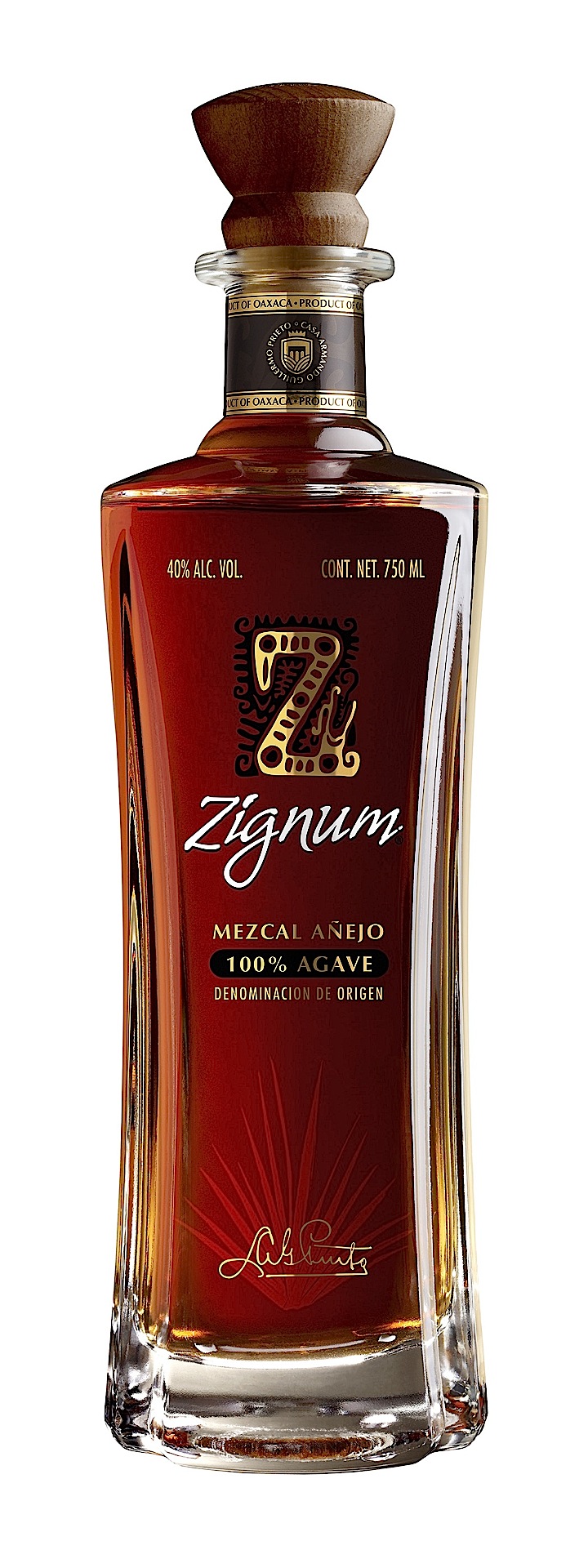 I say usually smoky because
Zignum eschews the smoke so often found in Mezcal,
focusing more on its honeyed aspects,
particularly in their reposado and añejo, accomplished
by cooking their piñas
(the hearts of the agave plants) with steam in
autoclaves, as opposed to a more traditional smoky
fire pit; the result is a spirit that has seen real
success in the markets it’s been introduced to. This
stylistic variation is a smart move, a way to
introduce mezcal to a wider American audience both
unfamiliar with it and likely to shy away from an
overtly smoky tipple right off the bat. Their
bottlings are models of smoothness, and, I think, a
very good way for consumers to
I say usually smoky because
Zignum eschews the smoke so often found in Mezcal,
focusing more on its honeyed aspects,
particularly in their reposado and añejo, accomplished
by cooking their piñas
(the hearts of the agave plants) with steam in
autoclaves, as opposed to a more traditional smoky
fire pit; the result is a spirit that has seen real
success in the markets it’s been introduced to. This
stylistic variation is a smart move, a way to
introduce mezcal to a wider American audience both
unfamiliar with it and likely to shy away from an
overtly smoky tipple right off the bat. Their
bottlings are models of smoothness, and, I think, a
very good way for consumers to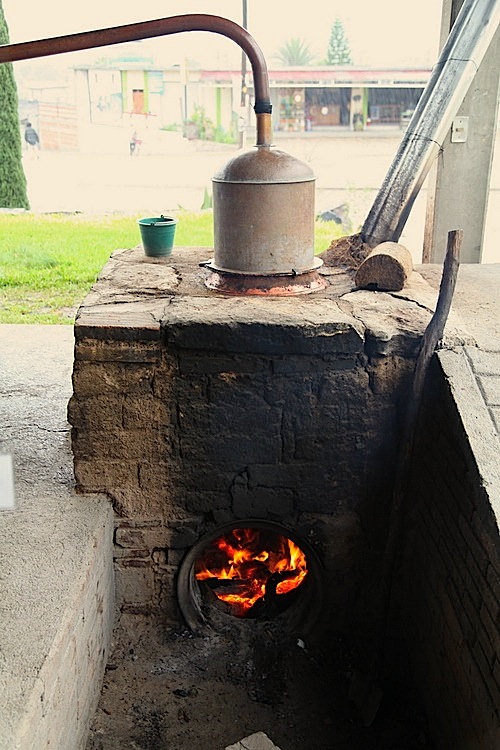 enter the world of mezcal
in particular and agave spirits in general. They’re
also wonderful in cocktails, informing the other
components of the recipes without dominating them. One
of my favorites in Oaxaca was the Pepino y Poleo,
a gorgeously refreshing “mezcalini” with Zignum
Silver, agave nectar, cucumber, and poleo, a local
version of peppermint. ) On the other end of the
spectrum are the more rustic examples that you find at
various palenques
dotting the roads around Oaxaca. These are typically
smokier bottlings, often made in hyper-traditional
ways, that provide a fascinating and often delicious
look into this mysterious spirit.
enter the world of mezcal
in particular and agave spirits in general. They’re
also wonderful in cocktails, informing the other
components of the recipes without dominating them. One
of my favorites in Oaxaca was the Pepino y Poleo,
a gorgeously refreshing “mezcalini” with Zignum
Silver, agave nectar, cucumber, and poleo, a local
version of peppermint. ) On the other end of the
spectrum are the more rustic examples that you find at
various palenques
dotting the roads around Oaxaca. These are typically
smokier bottlings, often made in hyper-traditional
ways, that provide a fascinating and often delicious
look into this mysterious spirit.
A visit to El
Caballo Blanco, a family-run operation in Santiago
Matatlan, was like stepping into the past, with a deep
pit behind the open-sided production area for the
cooking of the agave, a stone wheel for crushing the
piñas, and an open fire for operating the still
(right).
These mezcals, with their deep smokiness and intense
terroir specificity, are certainly not for everyone,
though I absolutely loved them, as well as the range
of expressions they embodied. Their Perla Blanca
bottling, an unaged spirit, spoke of smoke and spice,
whereas the añejo reminded me of a wood fire in
winter, the masculine notes of deep smoke amping up
the vanilla from its stint in barrels. One of the more
unusual bottlings I tasted here was the “pechuga de pollo,”
a mezcal that flavored with, as the name implies, the
breast of a chicken, lending the finished product here
flavors and aromas of almost medicinal berries and
higher toned smokiness than the others.
Zignum, by way of comparison,
produces its mezcal in a far more modern manner and
from 100% Espadin agave. Its gleaming new
glass-and-steel facility distills their Espadin from
Yautepec, outside of Oaxaca, to make a fine, clean
distillation, followed by specifically chosen
types of wood for aging--2 to 12 months in American
oak for reposado,
18 months in French and American white oak for añejo, which
leads to a spirit of remarkable flavor and aromatic
clarity. Zignum is just now being rolled out across
the broader United States, having begun in February
2011 in Miami, Chicago last September, and New York
and LA this year.
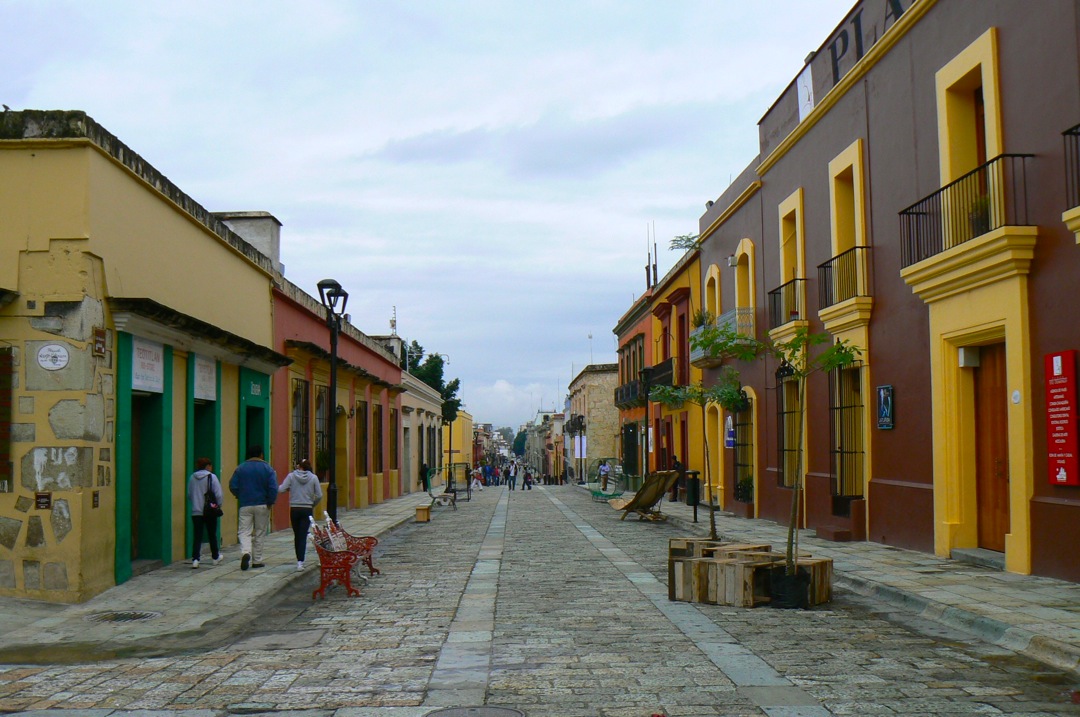 When I
told my family and friends that I’d be traveling to
Mexico, most of them had a similar response: Really?
Are you sure it’s safe? And in all honesty, I wondered
the same thing too: Problems from the ongoing drug
wars have been a concern for years, and the often
grisly violence that captures the attention of the
news media makes the decision to visit Mexico an
occasionally difficult one. This is unfortunate,
because there are plenty of parts of Mexico where you
can visit with impunity, where the problems that have
impacted other regions of this sprawling country are
really of little or no concern now. Oaxaca is one of
them.
When I
told my family and friends that I’d be traveling to
Mexico, most of them had a similar response: Really?
Are you sure it’s safe? And in all honesty, I wondered
the same thing too: Problems from the ongoing drug
wars have been a concern for years, and the often
grisly violence that captures the attention of the
news media makes the decision to visit Mexico an
occasionally difficult one. This is unfortunate,
because there are plenty of parts of Mexico where you
can visit with impunity, where the problems that have
impacted other regions of this sprawling country are
really of little or no concern now. Oaxaca is one of
them.
Over the course of my stay,
it became abundantly clear that this is a part of
Mexico that should be high on the list of destinations
for all serious travelers, a quick flight from
Mexico City, and my connections on Interjet,
were excellent. Also, a word of advice if you have a
layover in Mexico City but don’t have time to leave
the airport: Make sure to stop by
Tacañón, an unprepossessing eatery set
back from the other more attention-grabbing spots in
the food court. To get there, walk up the steps or
ramp in the international terminal between Italianni’s
Pasta Pizza & Vino and the 7-Eleven. It will be on
your left, and it will be one of the best airport
meals you’ll have all year. The huarache,
anchored by a silky and earthy black bean puree, was
distractingly good, a layered, balanced dish that
over-performed by every metric. Tacos al pastor were
tender and kissed with a hint of smoke, and among the
best I’ve had recently.
Once we arrived in Oaxaca, we
checked into the sprawling, lovely Camino
Real hotel, a converted convent  whose public spaces and
rooms are as beautiful and intimately tied to the
place as any hotel I’ve stayed in. The central
courtyard, with its impossibly green grass and calmly
gurgling fountain, provides a lovely backdrop for
breakfasts--especially if you sit at one of the tables
beneath the arches--that will leave you well stuffed
until lunch. Make sure to take advantage of the
tamales, which, though dense and filling, demand being
consumed in quantity. Also make sure to stay in one
night for the guelaguetza,
a performance of traditional dances (right) in which
the live music, vivid costumes, and transporting
choreography make for an utterly charming
evening, with a nice buffet dinner in the
sprawling16th century chapel on-site.
whose public spaces and
rooms are as beautiful and intimately tied to the
place as any hotel I’ve stayed in. The central
courtyard, with its impossibly green grass and calmly
gurgling fountain, provides a lovely backdrop for
breakfasts--especially if you sit at one of the tables
beneath the arches--that will leave you well stuffed
until lunch. Make sure to take advantage of the
tamales, which, though dense and filling, demand being
consumed in quantity. Also make sure to stay in one
night for the guelaguetza,
a performance of traditional dances (right) in which
the live music, vivid costumes, and transporting
choreography make for an utterly charming
evening, with a nice buffet dinner in the
sprawling16th century chapel on-site.
The city center itself is walkable
and utterly charming, the colors of the buildings and
the energy of the bars and restaurants beguiling, the
famed Zocalo demanding you walk through it at least
once a day. For an instant education in mezcal, stop
by Mezcaleria Los Amantes and explore the range of
remarkable bottlings on offer. The evening I visited,
a guitar player held sway in the doorway and, after a
few samples, I could have sworn the colored lights
strung throughout began to move to the rhythm. For a
late-night blowout, take the 25-minute walk from there
to Café
Central, a packed bar with a thumping dance
floor and one of the hippest, most unselfconscious
crowds around, all moving to the expertly chosen tunes
of several DJs spinning everything from old-school
American R & B to popular Mexican music.
 Make sure you get enough
rest, however, if you’ll be heading out to Monte Alban
(below), the
awe-inspiring ruins of the ancient Zapotecs. The site
here dates to approximately 500 BCE, and walking
around the sprawling complex, centered around a
football-field-looking expanse of land surrounded by
ancient
Make sure you get enough
rest, however, if you’ll be heading out to Monte Alban
(below), the
awe-inspiring ruins of the ancient Zapotecs. The site
here dates to approximately 500 BCE, and walking
around the sprawling complex, centered around a
football-field-looking expanse of land surrounded by
ancient 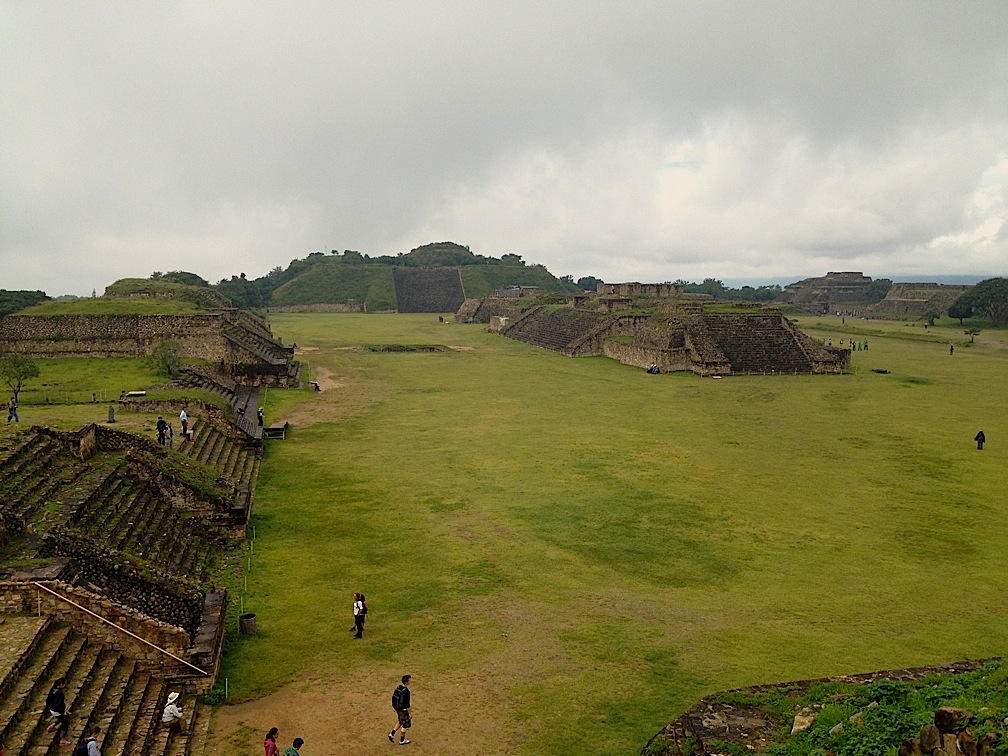 stone structures, should be
on everyone’s bucket list. Then, of course, there’s
the food of Oaxaca, some of the best and justifiably
most beloved of the country. Moles here are every bit as good as
you’d imagine, from Chef José Manuel
Baños Rodrigues’s filigréed layering of
spices at Casa
Pitiona (below)
to the uniquely sour-edged “mojo de chapulin,” prepared for us
at Zignum by Chef Alejandro Ruiz of Casa
Oaxaca. As far as those grasshoppers, or chapulines (above), get over
the cultural
stone structures, should be
on everyone’s bucket list. Then, of course, there’s
the food of Oaxaca, some of the best and justifiably
most beloved of the country. Moles here are every bit as good as
you’d imagine, from Chef José Manuel
Baños Rodrigues’s filigréed layering of
spices at Casa
Pitiona (below)
to the uniquely sour-edged “mojo de chapulin,” prepared for us
at Zignum by Chef Alejandro Ruiz of Casa
Oaxaca. As far as those grasshoppers, or chapulines (above), get over
the cultural 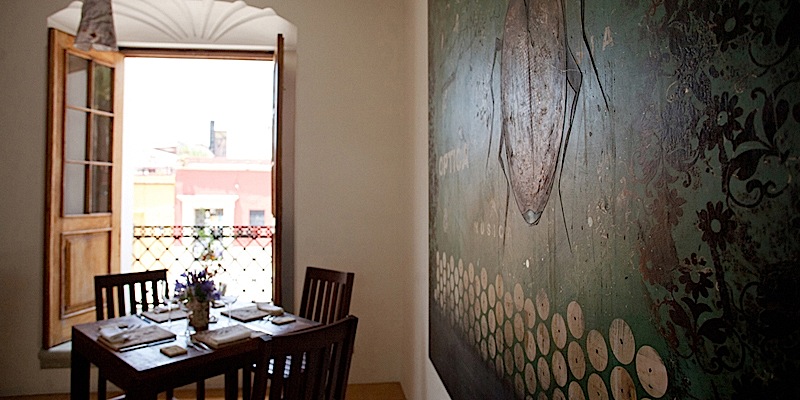 reluctance to consume bugs
and tuck in whenever you have a chance. By midway
through the first full day in Oaxaca, I’d become
fairly addicted to their nutty, sour crunch. With a
snifter or glass of mezcal, they are compulsively
poppable. And in a rare treat at Casa Pitiona, we were
served a sauce of
chicatanas, or flying ants that are caught
after the first rains force them to leave their nests.
Their flavor is somewhere between nutty and sour with
a hint of earthiness, and they more than lived up to
their reputation as a delicacy.
reluctance to consume bugs
and tuck in whenever you have a chance. By midway
through the first full day in Oaxaca, I’d become
fairly addicted to their nutty, sour crunch. With a
snifter or glass of mezcal, they are compulsively
poppable. And in a rare treat at Casa Pitiona, we were
served a sauce of
chicatanas, or flying ants that are caught
after the first rains force them to leave their nests.
Their flavor is somewhere between nutty and sour with
a hint of earthiness, and they more than lived up to
their reputation as a delicacy.
Oaxaca, then, is a
destination that I cannot recommend highly enough,
whether you’re visiting for touristic or gastronomic
reasons. Smart travelers, of course, will focus on
both. It may not boast the beaches of Cancun or the
resorts of Puerta Vallarta, but it doesn’t need to.
Oaxaca is a wholly unique, utterly wonderful place to
visit, regardless of what you’re hoping to get out of
it.
by John Mariani
THE STRAND SMOKEHOUSE
25-27 Broadway

Astoria, Queens
718-440-3231
That's what's printed at the top of the menu at The Strand, a big, no frills smokehouse in the Strand section of Astoria, which owner Tommy Vasilis and Chef Eric Milley opened in November. "Step 1: SEAT! Grab yourself a seat and lay claim to your spot," which means that the long wooden tables are there for the taking. There is an affable hostess at the door to explain all this, but you choose to sit wherever you like. "Step 2: DRINKS! Pay as you go at the bar, whatever is your pleasure," which means you go up to the long bar and order from 16 locally sourced beers, including some of Queens and the Bronx, and 40 liquors--many unique to The Strand--slap down your money, and walk back to your table. "Step 3: FOOD! Saddle up in line and order your meat by the pound." There are no saddles here, so just get in line and order your food at the end of the bar. "Step 4: ENJOY! Remember: Drink water. Or not. Whatever."
 These
friendly exhortations are meant to convey--if you
didn't figure it out upon entering--that this is
not a sit-down-and-be-served restaurant, and the
food is meant more to resemble that of Texas
classic barbecue spots like Kreuz Market in
Lockhart, where slabs of meat and sausage are
slipped onto butcher paper and consumed with
nothing more than a stack of white bread. The
Strand is not that restrictive, offering a good
deal more, but the emphasis is on the smoked
meats, which range, on any given night, hot
soppressata, pork salami, pork terrine, pulled
pork, pork ribs, lamb leg, beef ribs, short rib,
duck pastrami, rib-eye, half a chicken, wings,
pork loin and pork belly. All the meats are
dry-rubbed, and while they come with bottled
sauces, you could eat them without them and be
happy. Meats, as noted, are all priced by
the pound.
These
friendly exhortations are meant to convey--if you
didn't figure it out upon entering--that this is
not a sit-down-and-be-served restaurant, and the
food is meant more to resemble that of Texas
classic barbecue spots like Kreuz Market in
Lockhart, where slabs of meat and sausage are
slipped onto butcher paper and consumed with
nothing more than a stack of white bread. The
Strand is not that restrictive, offering a good
deal more, but the emphasis is on the smoked
meats, which range, on any given night, hot
soppressata, pork salami, pork terrine, pulled
pork, pork ribs, lamb leg, beef ribs, short rib,
duck pastrami, rib-eye, half a chicken, wings,
pork loin and pork belly. All the meats are
dry-rubbed, and while they come with bottled
sauces, you could eat them without them and be
happy. Meats, as noted, are all priced by
the pound.The premises were once a Blockbuster video store (remember them?), with outdoor dining available both in front and behind the main dining room, which is done up with slatted barn wood walls, cement floors, hanging lights, wood-slatted ceiling, and seating for 200. That's it.
We just asked Milley to pile stuff on our trays and we'd take it from there, having ordered a variety of beers at the bar, served in Mason jars. Milley brought over a good deal of what's listed above, and to one degree or other, it hit that 'cue spot with admirable panache. The charcuterie was lavish and
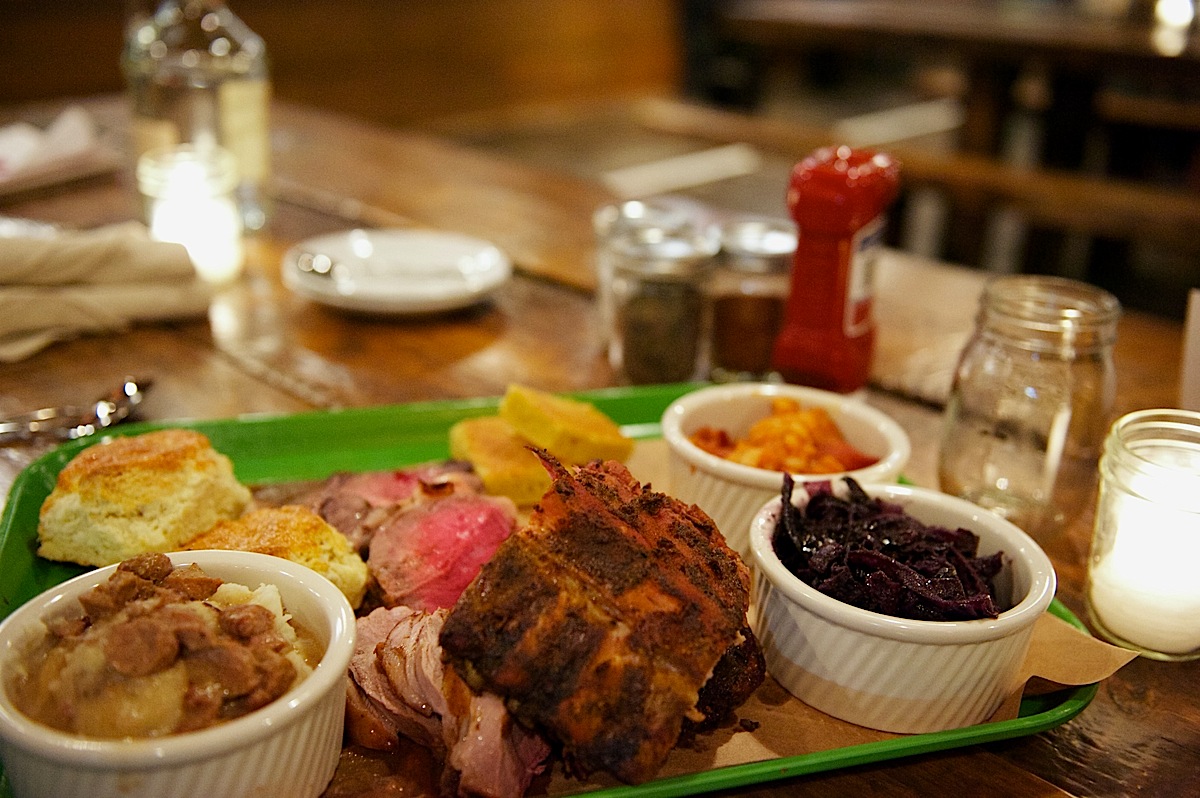 very
good, with crusty bread and mustards, and the duck
pastrami was a triumph, good and juicy, with a
fine briny flavor. Also very good were the
beef short rib and the lamb leg. One or two of the
meats, however, were less than tepid, which is odd
coming out of that smokey oven.
very
good, with crusty bread and mustards, and the duck
pastrami was a triumph, good and juicy, with a
fine briny flavor. Also very good were the
beef short rib and the lamb leg. One or two of the
meats, however, were less than tepid, which is odd
coming out of that smokey oven. The Strand also has a fine selection of nightly cheeses like Hudson Valley Camembert, Cabbot Clothbound Cheddar, and Landoff Tomme that goes great with the sliced charcuterie.
The Strand is a work in progress, and I was not thrilled about the dry cornbread or biscuits that needed to be a lot flakier and not so dense. Some of the side dishes were good but none outstanding, aside from delicious mashed potatoes.
Brunch has been a big success on weekends, when they do have waiter service.
I certainly wouldn't mind having waiters every night, which at the very least adds a personal touch to the cafeteria-style atmosphere. Their advice would prove valuable. As it is, you have to be in the mood for following that four-step program, but at the end of the line, you're going to get some good 'cue. With a few more weeks under their belt, The Strand should have everything in synch, sides included. Meanwhile, saddle up.
The Strand is open nightly for dinner, Sat. & Sun. for brunch. Meats are by the pound.
❖❖❖
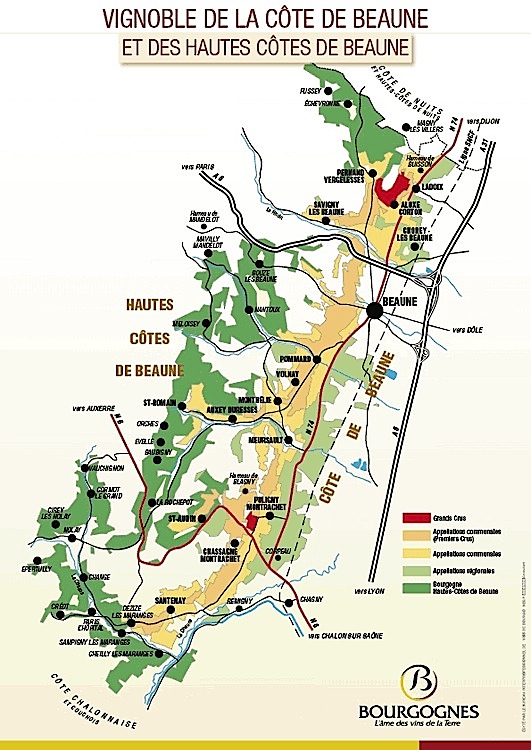
A few years ago, when the head of the
prestigious Domaine de la Romanée-Conti said of
the new vintage, “These wines are ready to be drunk very
soon,” I asked him how soon that might be. “Oh, in just
ten to fifteen years.” Since recent vintages of
Romanée-Conti have been selling for above $10,000
a bottle, that seems an awful long time to delay the
pleasure of drinking one.
Fortunately, times are changing in
Burgundy, where, on a visit last November, most of the
vignerons and winemakers I spoke with scoffed at the
idea that their wines should be held back for years and
years. While tasting the wines of Château de la
Tour Clos-Vougeot, 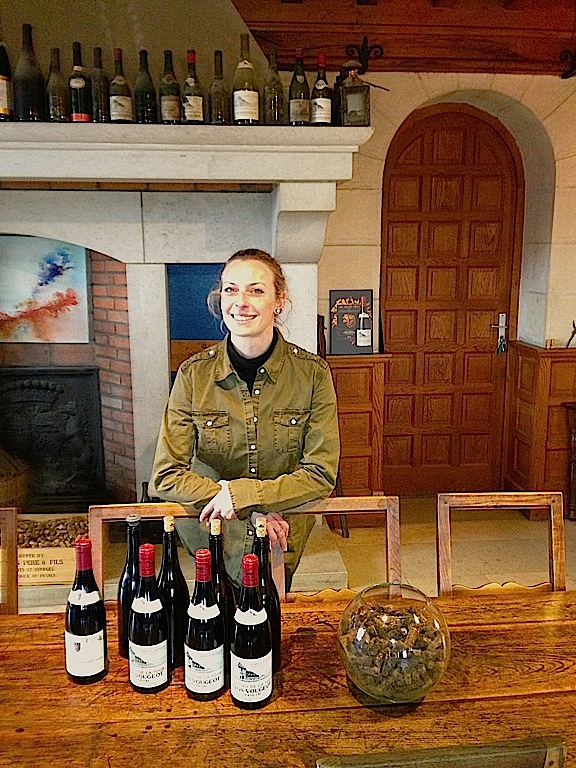 I was struck by
how forward a vintage like 2007 was, confirmed by sales
manager Claire Naigeon (right), who said, “It is a delicate
wine and not a year for keeping. In two more
years the wine will be superb.”
I was struck by
how forward a vintage like 2007 was, confirmed by sales
manager Claire Naigeon (right), who said, “It is a delicate
wine and not a year for keeping. In two more
years the wine will be superb.”
Technology and innovation does not
yet trump tradition in Burgundy, but outmoded techniques
have been abandoned in favor of more analysis of terroir
to grow healthier vines and to produce wines with more
balance fruits and acids that don’t require decades of
aging. Blair
Pethel, a rare American who owns a Burgundy vineyard,
Domaine Dublère, began making wines in 2004 and
believes everything from using organic soil to the
gravitational pull of the moon affects his wines. “Once
you achieve balance in a wine, it should stay balanced
for a very long time,” he told me during a tasting at
his small estate in La Montagne. I found Pethel’s wines
like 2011 Savigny Les Beaune bright, even sassy,
indicative of a wine that will be delicious upon release
next year.
“In the 1990s the style for Burgundy
was power and extraction,” said Thibaut Marion, owner of
Séguin-Manuel, over dinner in Beaune. “But they
did not always hold up.
Now, we are aiming at more finesse and fruit. I
hardly ever chaptalize my wines,” referring to the
Burgundian practice of adding sugar to grape must to
increase the wine’s alcohol level. “The wines are now
better, fresher, with concentration of flavors that come
together much sooner than they did with the old style.”
 Laurent
Drouhin (left),
U.S.-based export director for Joseph Drouhin, whose
business card reads “L’elegance
naturelle des grands bourgognes,” explained to
me that while the vinification of the Grand Cru an
Premier Cru wines of Burgundy has not changed, “We have
never sought to make heavily extracted wines, so ours
can be enjoyed a bit younger.”
Laurent
Drouhin (left),
U.S.-based export director for Joseph Drouhin, whose
business card reads “L’elegance
naturelle des grands bourgognes,” explained to
me that while the vinification of the Grand Cru an
Premier Cru wines of Burgundy has not changed, “We have
never sought to make heavily extracted wines, so ours
can be enjoyed a bit younger.”
Recently Drouhin gave a tasting for a
group of bankers who asked what Burgundies would be best
for their clients to buy, store, then re-sell as an
investment. “I jumped up and told them that is not why
we produce wine,” he said. “We want people to drink and
enjoy them, not keep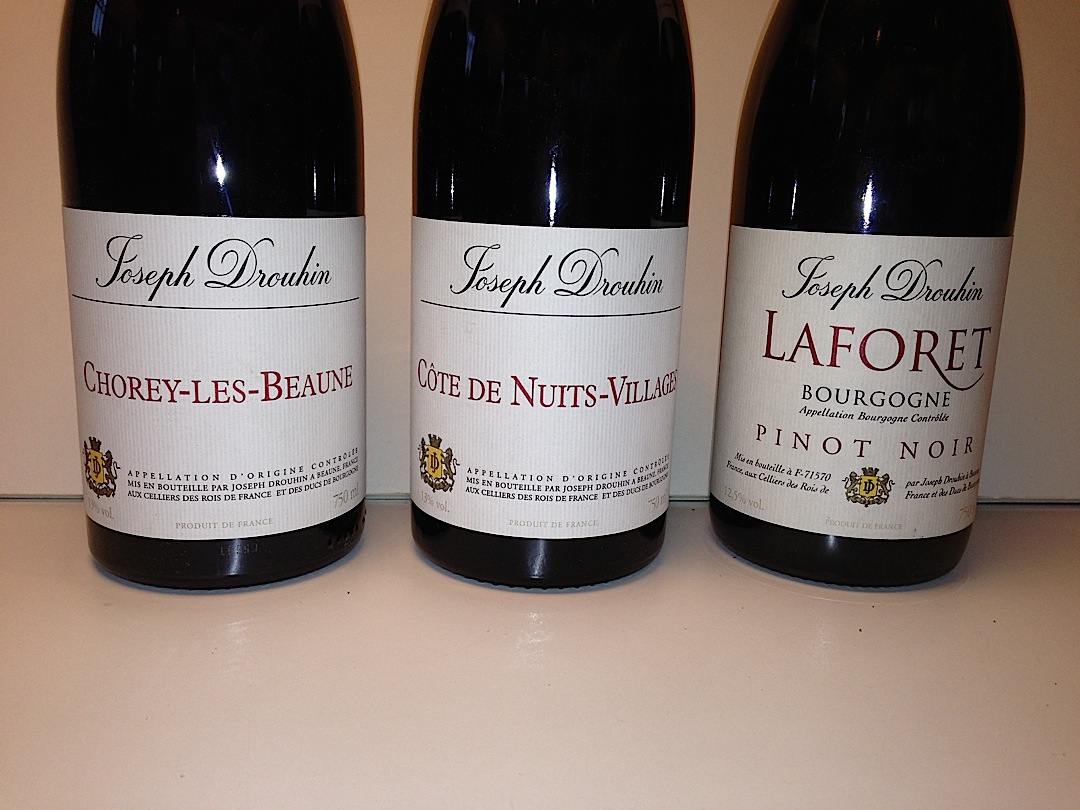 them to sell
years from now. You can easily enjoy younger Burgundies
from the village appellations (right). Even the Grand Crus from
Chambolle Musigny can be enjoyed a bit younger, but
you're still going to have to wait for a Chambertin to
mature fully.”
them to sell
years from now. You can easily enjoy younger Burgundies
from the village appellations (right). Even the Grand Crus from
Chambolle Musigny can be enjoyed a bit younger, but
you're still going to have to wait for a Chambertin to
mature fully.”
Reflecting the trend towards drinking
younger red Burgundies, wine-centric restaurants carry a
deep selection of recent vintages on their winelists. At Daniel
Boulud’s DB
Bistro Moderne in New York, sommelier Caleb Ganzer
has more than 50 dozen red Burgundies listed,
overwhelmingly from the 2008, 2009, and 2010 vintages,
including many Premier Cru, along with a handful of
bottlings from the late 1980s and 1990s.
“Burgundies are all very allocated
when you want to grab great wines in current release and
try to hold onto them to see how they develop,” says
Ganzer. “And the recent vintages deliver so much
pleasure now right out of the bottle. People are also
looking for more fruit and less earth, and producers are
delivering that now.”
❖❖❖
 . . . BUT AHEAD OF LIBYAN DICTATORS
. . . BUT AHEAD OF LIBYAN DICTATORS
AND
HOLLYWOOD AGENTS
Oxford psychologist Kevin
Dutton, in his book The
Wisdom of Psychopaths,
did a survey
and found that chefs came in ranking ninth most
psychopathic,
just after the clergy and before civil servants.

"It sounds like I'm babbling, but after you drive the
long, winding lane and dine at the new Bull Valley
Roadhouse in Port Costa, you too will talk like this --
in disjointed exclamations of delight. The fried green
beans! Did you see the daguerreotypes by the door?
There's a golden bull hanging outside! I blame the
charming time-lapse feel of the place. Let's start
there."--Jackie Burrell, "Port Costa's Bull
Valley Roadhouse exudes retro charm," Contra Costa Times (1/15/13).
❖❖❖
Any of John Mariani's
books below may be ordered from amazon.com.
 |
My latest book, which just won the prize for best book from International Gourmand, written with Jim Heimann and Steven Heller, Menu Design in America, 1850-1985 (Taschen Books), has just appeared, with nearly 1,000 beautiful, historic, hilarious, sometimes shocking menus dating back to before the Civil War and going through the Gilded Age, the Jazz Age, the Depression, the nightclub era of the 1930s and 1940s, the Space Age era, and the age when menus were a form of advertising in innovative explosions of color and modern design. The book is a chronicle of changing tastes and mores and says as much about America as about its food and drink.
“Luxuriating vicariously in the pleasures of this book. . . you can’t help but become hungry. . .for the food of course, but also for something more: the bygone days of our country’s splendidly rich and complex past. Epicureans of both good food and artful design will do well to make it their coffee table’s main course.”—Chip Kidd, Wall Street Journal.
“[The menus] reflect the amazing craftsmanship that many restaurants applied to their bills of fare, and suggest that today’s restaurateurs could learn a lot from their predecessors.”—Rebecca Marx, The Village Voice. |
"Eating Italian will never be the same after reading John Mariani's entertaining and savory gastronomical history of the cuisine of Italy and how it won over appetites worldwide. . . . This book is such a tasteful narrative that it will literally make you hungry for Italian food and arouse your appetite for gastronomical history."--Don Oldenburg, USA Today. "Italian
restaurants--some good, some glitzy--far
outnumber their French rivals. Many of
these establishments are zestfully described
in How Italian Food Conquered the World, an
entertaining and fact-filled chronicle by
food-and-wine correspondent John F.
Mariani."--Aram Bakshian Jr., Wall Street
Journal.
"Equal parts
history, sociology, gastronomy, and just
plain fun, How Italian Food Conquered the
World tells the captivating and delicious
story of the (let's face it) everybody's
favorite cuisine with clarity, verve and
more than one surprise."--Colman Andrews,
editorial director of The Daily
Meal.com. "A fantastic and fascinating
read, covering everything from the influence
of Venice's spice trade to the impact of
Italian immigrants in America and the
evolution of alta cucina. This book will
serve as a terrific resource to anyone
interested in the real story of Italian
food."--Mary Ann Esposito, host of PBS-TV's
Ciao
Italia. "John Mariani has written the
definitive history of how Italians won their
way into our hearts, minds, and
stomachs. It's a story of pleasure over
pomp and taste over technique."--Danny Meyer,
owner of NYC restaurants Union Square Cafe,
Gotham Bar & Grill, The Modern, and
Maialino.
|
 |
 |
 |
 |
 |
 |
 |
 |
 Everett Potter's Travel Report:
Everett Potter's Travel Report: 
 Eating Las Vegas
is the new on-line site for Virtual Gourmet
contributor John A. Curtas., who since 1995
has been commenting on the Las Vegas food
scene and reviewing restaurants for Nevada
Public Radio. He is also the
restaurant critic for KLAS TV, Channel 8 in
Las Vegas, and his past reviews can be
accessed at KNPR.org.
Click on the logo below to go directly to
his site.
Eating Las Vegas
is the new on-line site for Virtual Gourmet
contributor John A. Curtas., who since 1995
has been commenting on the Las Vegas food
scene and reviewing restaurants for Nevada
Public Radio. He is also the
restaurant critic for KLAS TV, Channel 8 in
Las Vegas, and his past reviews can be
accessed at KNPR.org.
Click on the logo below to go directly to
his site.
www.EatingLV.com

Tennis Resorts Online: A Critical Guide to the World's Best Tennis Resorts and Tennis Camps, published by ROGER COX, who has spent more than two decades writing about tennis travel, including a 17-year stretch for Tennis magazine. He has also written for Arthur Frommer's Budget Travel, New York Magazine, Travel & Leisure, Esquire, Money, USTA Magazine, Men's Journal, and The Robb Report. He has authored two books-The World's Best Tennis Vacations (Stephen Greene Press/Viking Penguin, 1990) and The Best Places to Stay in the Rockies (Houghton Mifflin, 1992 & 1994), and the Melbourne (Australia) chapter to the Wall Street Journal Business Guide to Cities of the Pacific Rim (Fodor's Travel Guides, 1991).


MARIANI'S VIRTUAL GOURMET
NEWSLETTER is published weekly. Editor/Publisher: John
Mariani.
Contributing Writers: Christopher Mariani, Robert Mariani,
John A. Curtas, Edward Brivio, Mort Hochstein,
Suzanne Wright, and Brian Freedman. Contributing
Photographers: Galina Stepanoff-Dargery,
Bobby Pirillo. Technical Advisor: Gerry McLoughlin.
To un-subscribe from this newsletter,click here.
© copyright John Mariani 2013
